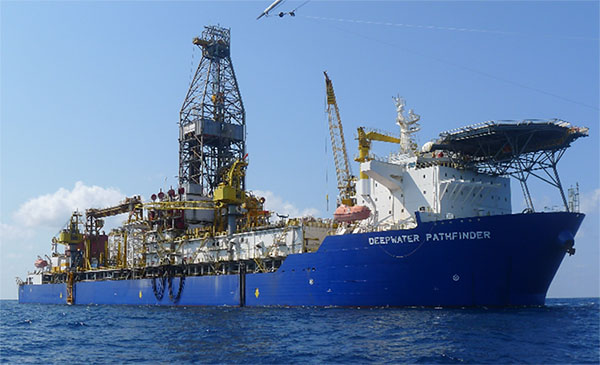Nearly five years after OPEC decided to defend market share rather than oil prices, the reality of the oil market’s long-term future is forcing producers and service companies to reset their strategies.
Few expect oil prices to jump to $100 bbl. Instead, it appears that WTI is locked in a $50-a-barrel range for the foreseeable future. Transocean CEO Jeremy Thigpen set out his company’s optimistic view of the offshore market at an energy conference recently, but even his view suggests work remains to be done by both his company and the industry before a sustainable recovery can occur.
Thigpen’s recent investor presentation came the day following his company’s announcement that it plans to scrap three more drillships and take an associated $580 million asset write-down. Thigpen’s presentation traced Transocean’s efforts since 2014 to restructure its fleet and balance sheet to survive the downturn and be positioned for the eventual upturn once market conditions dictate.
In a nutshell, the steps have transitioned Transocean from a 91-rig fleet, including high-specification jackups, midwater floaters and ultradeepwater harsh environment assets, to a much smaller fleet of 49 rigs that is 100% floater oriented. In 2014, the average age of the company’s floaters was 21 years. Now it's down to 11, and if three midwater rigs are excluded, is only eight years. Furthermore, 94% of the smaller Transocean rig fleet is focused on harsh environment and ultradeepwater, up from 45% in 2014.
The Transocean fleet makeover comes as its customers find themselves in the middle of realigning their portfolios for an oil industry future that reflects more shale and targeted offshore projects, but potentially lower activity levels than previously envisioned. The targeted offshore projects may require high-end rather than older, lower and mid-water capable rigs. BP’s sale of its Alaska assets, ExxonMobil’s sale of its Norwegian North Sea assets, and Chevron and ConocoPhillips selling their North Sea properties reflect this major oil company shift. These companies are upping their commitments to shale, while also embracing offshore projects in their future production plans.
Transocean’s remake has involved scrapping, selling and upgrading rigs, while also making strategic fleet purchases. However, the industry needs to do more to shrink its physical fleet to a smaller marketable one — one which will hasten a recovery in day rates when drilling demand rises.
Thigpen said during his presentation that his customers are telling him that they see their future offshore spending making up greater portions of their capex budgets than historically has been the case, with offshore spending rising in 2020 and 2021. Is this an optimistic view? Possibly. However, oil company restructuring moves suggest that capex spending going forward will be a better balance of short-term, quick-payout shale projects against long-cycle deepwater and harsh environment ones.
Immediate cash flow and production against negative cash flows for longer time periods, but rewarded with greater reserves and well productivity. As oil company restructuring reaches fruition, maybe the nascent offshore recovery is poised to accelerate.




